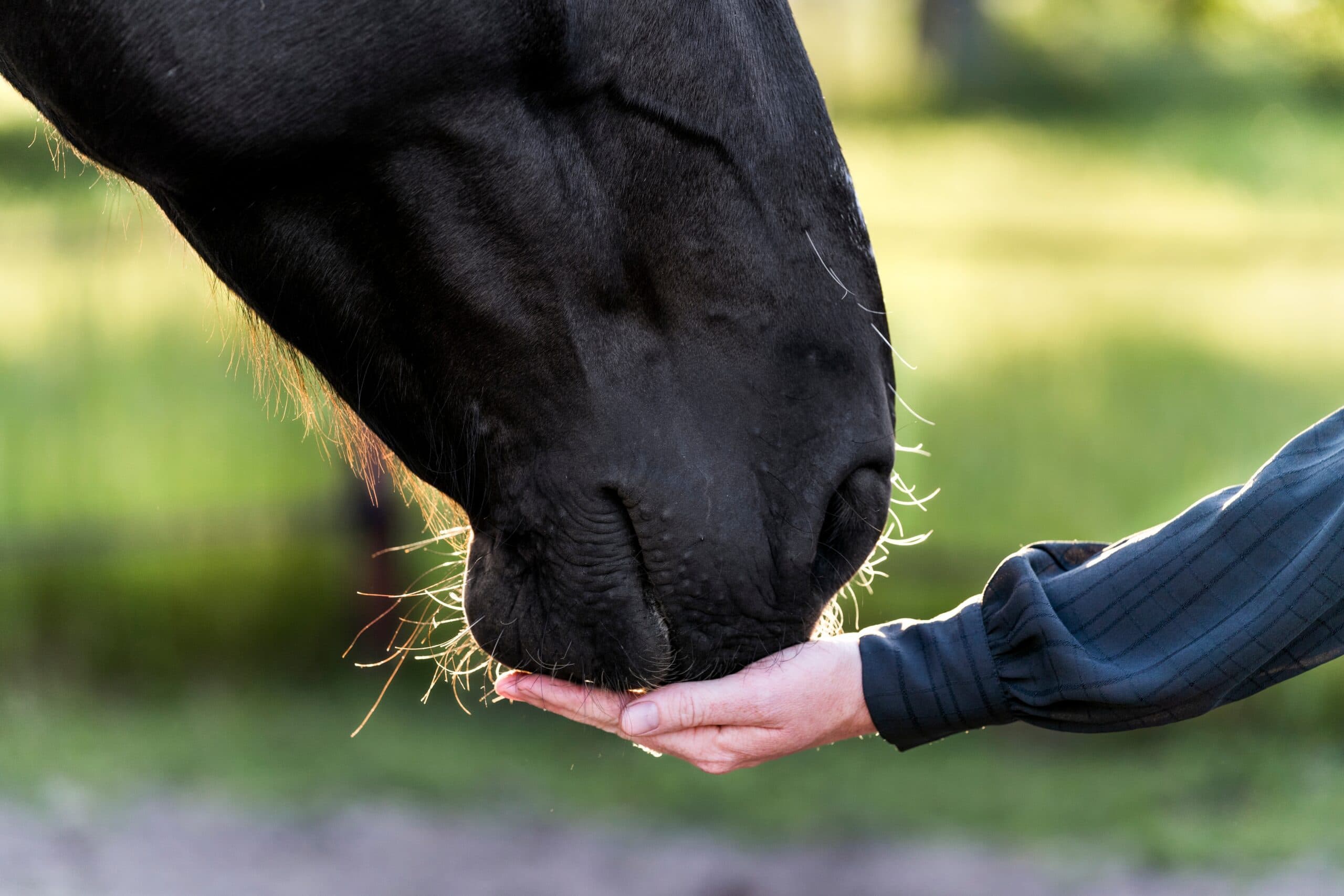Winter isn’t a time for your horse to go into hibernation. Horses need stable exercise year round – otherwise, they grow out of shape and risk musculoskeletal injuries when ridden again during spring and summer competitions. This doesn’t mean you have to ride your horse as hard as you do during warm months, however. In fact, winter fitness routines should be gentler to accommodate for the cold weather and poor ground conditions.
Starting a routine
As always, begin your horse’s exercise routine with a stretching and warm up session. This is especially important because of winter’s cold temperatures – your horses’s muscles will be stiff and tight, and stretching reduces the chance of injury. Equine supplements like Finish Line’s JC’s X-Tie Up also promote healthy muscle functions.
Walk your horse around and gently bend it from side to side. If your horse was stabled prior to exercise, you only need to spend about 10 to 20 minutes warming up, according to TheHorse.com. Equines that were already turned out need even less time.
“Tailor some sessions to your horse’s particular sport.”
Weather permitting, you should always try to tailor some of your exercise sessions toward your horse’s particular sport. You don’t have to spend a lot of time on your workouts, but consistency is key.
“For cardiovascular fitness, regardless of the discipline, the horse needs 15 to 25 minutes of active exercise, five days a week, to maintain baseline fitness,” Andy Kaneps, a practitioner at the New England Equine Medical and Surgical Center in Dover, N.H., said to TheHorse.com. “Although the basics of cardiovascular fitness are no different from one discipline to another, discipline-specific exercises are very important. A dressage horse, for example, will need to do a lot more lateral work, leg yields, etc., than a trail horse.”
You can also register for small indoor competitions to keep your horse used to traveling and showing. This way, it won’t experience as much stress during larger competitions.
“Excessive sweating is dangerous in the winter.”
Keeping your horse safe and healthy
How hard you work your horse depends on its fitness level and the outside temperature. Don’t start increasing the intensity of your workouts in the winter – keep them similar to or easier than how you exercised your horse in the fall. Not only will a harder workout in the cold be exceptionally difficult for a horse, but it also causes the animal to sweat more. Excessive sweating is dangerous in the winter – your horse will likely grow ill as the moisture cools rapidly against its skin.
If your horse is exercised to the point of sweating, the University of Minnesota suggested giving it a trace clip to reduce the hair in areas it sweats the most. Keep in mind that horses clipped in winter will need to be blanketed.
In addition, the cold air is difficult on an equine’s lungs. Dustin Gram, a trainer in Alberta, Canada, told Horses All he keeps his equines stabled if the thermometer inside his indoor arena reads lower than -4 Fahrenheit. Anything colder leads to respiratory issues. If your horse does develop a minor winter cough, natural products like Finish Line’s Air Power provide relief and support proper breathing.
After a workout, Horses All advised walking your horse for at least 15 minutes to cool it down. This allows the sweat to dry and keeps the blood circulating throughout its body, flushing out byproducts.
Weather permitting, you can exercise your horse on the same schedule as you did during summer. If not, at least give your horse some turnout time so it can move and keep its muscles and joints fluid. Consider adjusting your equine’s feed and providing nutrients like vitamin E and selenium to support strong muscles and keep your horse a healthy weight.








